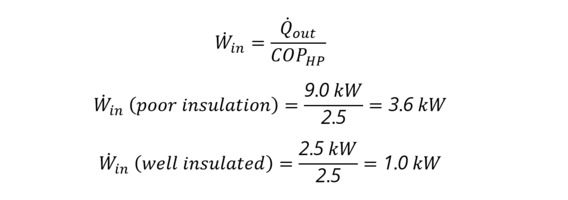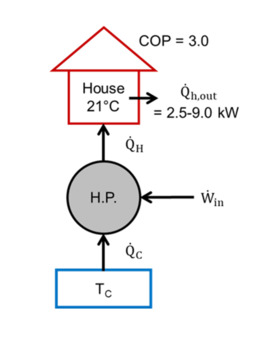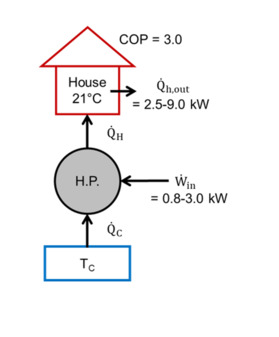 Author: Dr Gill Lacey (Teesside University).
Author: Dr Gill Lacey (Teesside University).
Topic: Maintenance of an offshore wind farm.
Engineering disciplines: Mechanical; Energy.
Ethical issues: Sustainability; Risk.
Professional Situations: Public health and safety; Quality of work; Conflicts with leadership/management.
Educational level: Beginner.
Educational aim: Becoming Ethically Aware: determining that a single situation can be considered from a ethical point of view.
Learning and teaching notes:
The case is based on a genuine challenge raised by a multinational energy company that operates an offshore wind farm in the North Sea. It involves three professional engineers responsible for various aspects of the project to negotiate elements of safety, risk, environmental impact, and costs, in order to develop a maintenance plan for the wind turbine blades.
This case study addresses two of AHEP 4’s themes: The Engineer and Society (acknowledging that engineering activity can have a significant societal impact) and Engineering Practice (the practical application of engineering concepts, tools and professional skills). To map this case study to AHEP outcomes specific to a programme under these themes, access AHEP 4 here and navigate to pages 30-31 and 35-37.
This case is presented in two parts. In the first part, the perspectives and responsibilities of the three engineers are outlined so that students can determine what professional and ethical responsibilities are inherent in their roles. In the second part, a scenario is developed that puts the roles into potential conflict. Students then have the opportunity to work through a real-world brief that requires them to negotiate in order to present a solution to management. Teachers can choose to use Part one in isolation, or some or all of Part two to expand on the issues in the case. The case allows teachers the option to stop at multiple points for questions and / or activities, as desired.
Learners have the opportunity to:
- determine if an engineering situation has ethical dimensions and identify what these are;
- identify where tensions might arise between professionals and practise resolving those tensions;
- consider and present possible solutions to a professional dilemma;
- integrate ethical considerations into an engineering solution.
Teachers have the opportunity to:
- highlight professional codes of ethics and their relevance to engineering situations;
- address approaches to resolve interpersonal and/or professional conflict;
- integrate technical content on engineering design;
- evaluate students’ critical thinking and communication skills.
Learning and teaching resources:
Professional organisations:
Business:
Journal articles:
- Understanding values embedded in offshore wind energy systems: Toward a purposeful institutional and technological design
- Reviewing the ecological impacts of offshore wind farms
- CSR/Social License to operate
Dilemma – Part one:
Offshore wind has huge benefits to the electricity industry as a renewable, low carbon resource. The size and scale of the turbines, together with the remoteness – the wind farm referred to in this case is 200 km from shore – are a problem. However, it is a rapidly maturing industry and many of the issues around accessibility during installation have been solved. A wind farm is expected to generate for twenty years and so a system of inspection and maintenance needs to be put in place. At the same time, the environmental impact of industrial activity (including ongoing maintenance and repairs) needs to be managed in order to mitigate risks to ecosystem resources and services provided by the open sea.
In this wind farm there are one hundred turbines, each with three blades. The blades are 108 m long. Clearly, they need to be kept in good condition. However, inspecting the blades is a difficult and time consuming job.
There are three engineers that are responsible for various aspects of maintenance of the wind turbine blades. They are:
1. Blade engineer: My job is to make sure the blades are in good condition so that the wind farm operates as it was designed and generates as much power as possible. I am responsible for:
- Checking each blade for damage;
- Assessing whether repairs are needed, what repairs those are, and how urgently;
- Determining how maintenance can be conducted efficiently and cost-effectively.
2. Health and safety engineer: My job is to make sure that the technicians who inspect and maintain the turbine blades are at minimal risk. I need to ensure compliance with:
- Employment safety regulations;
- Legal guidelines governing industrial activity in the open sea.
3. Environmental engineer: My job is to ensure that the ecosystem is damaged as little as possible during turbine inspection and maintenance, and to rectify as best as possible any adverse effects that are incurred. After all, wind power is considered to be “green” energy and so wind farms should do as little damage to the environment as possible. This work helps:
- The company to meet or exceed its corporate responsibility commitments relating to social licence to operate;
- Maintain the ecological integrity of the ecosystem.
Optional STOP for questions and activities:
1. Discussion: What sort of instances might cause damage to the turbine blades? (Possible answers: bird strike, collision with a vessel, storm, ice etc.)
2. Discussion: What problems might a damaged blade cause? (Possible answers: a damaged blade cannot generate properly; it might unbalance the other two blades until the whole turbine is affected. If a blade were to come loose it could strike another turbine blade, a vessel, sea creatures etc.)
3. Activity: Research how blade inspection is done. (Answer: a combination of photos from drones and reports from crew who need to use rope access to take a close look.)
a. If a drone is used, what issues might the drone have? (Answers: needs to be operated from a nearby vessel; weather (wind!); getting good resolution photos from a vibrating and moving drone; energy (battery) to power the drone.)
b. If a technician goes onsite, what issues are there with rope access? (Answers: time consuming; dangerous; can only be done in good weather; have to stop the turbine to access; training the inspection team; recording the findings.)
4. Discussion: What competing values or motivations might conflict in this scenario? Explain what constraints each engineer might be operating under and the potential conflicts between the roles.
5. Activity: Research what health and safety, environmental, and legal policies affect offshore wind farms. If they are in the open sea, which country’s laws are applied? Who is responsible for maintaining ecosystem health in the open sea? How are harms identified and mitigated?
Dilemma – Part two:
So, the blade engineer wants maintenance done effectively, with as little down time as possible; the H&S engineer wants it done safely, with as little danger to crew as possible; while the environmental engineer wants it done with as little damage to the ecosystem as possible. These three people must together develop an inspection plan that will be approved by upper management, who are largely driven by profitability – limited downtime in maintenance means increased profits as well as more energy delivered to customers.
Optional STOP for questions and activities:
The students are then presented with a brief that gives some background to the wind farms and the existing inspection regime. The brief is structured to allow engineering design, engineering drawing and technical research to take place alongside consideration of potential ethical dilemmas.
Brief: In teams of three, where each team member is assigned a different role outlined above (blade engineer, health and safety engineer, environmental engineer), propose a feasible method for blade inspection that:
- Minimises or removes the need for personnel rope access and working from height;
- Minimises or removes downtime of a wind turbine generator (WTG) during inspection.
Aspects to consider:
- Types of damage that the solution can detect
- Detection methods
- Accuracy of data and how data is retrieved and processed
- Weather and sea conditions
- Ease and flexibility of operation e.g., distance from turbines, battery life, charging requirements
- Speed of inspection
- Safety of operation
- Effects on the environment.
Teachers could task teams to work together to:
- Develop a feasible blade inspection solution
- Create a project programme for development of the solution
- Assess risk, technical merit and personnel health & safety within the field
- Pitch the solution in a technical sales meeting.
The pitch could include details of:
- Overview of solution, methodology and unique selling points
- Technical explanation of solution (including product specifications and risk)
- Explanation of operability within the field
- Assessment of health & safety and environmental impact.
1. Activity: Working in groups, consider possible solutions:
a. Explore 2 or 3 alternatives to answer the need or problem, identifying the ethical concerns in each.
b. Analyse the alternative solutions to identify potential benefits, risks, costs, etc.
c. Justify the proposed solution.
(Apart from the design process, this activity allows some discussion over the choice of solution. Looking at more than one allows the quieter students to speak out and justify their thinking.)
2. Activity: Working in groups, present a solution that consists of one or more of the following:
a. Make a CAD or drawn prototype.
b. Make a physical or 3D model.
c. Create a poster detailing the solution which could include technical drawings.
d. Presentation.
Students will be assessed according to:
a. Quality of final solution
b. Construction and testing of model
c. Innovation and originality
d. Communication skills
This work is licensed under a Creative Commons Attribution-ShareAlike 4.0 International License.
Any views, thoughts, and opinions expressed herein are solely that of the author(s) and do not necessarily reflect the views, opinions, policies, or position of the Engineering Professors’ Council or the Toolkit sponsors and supporters.









